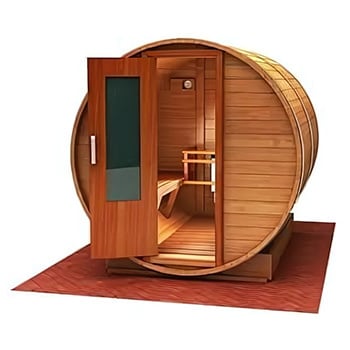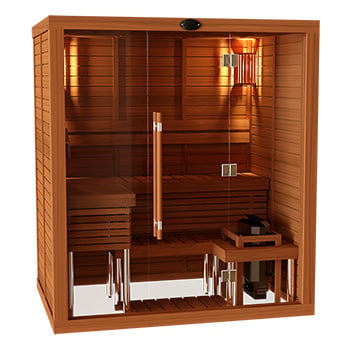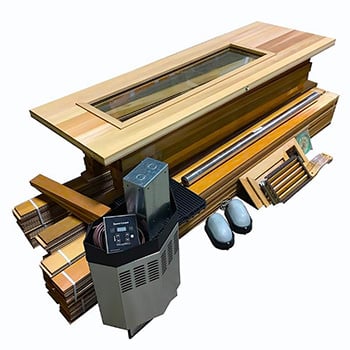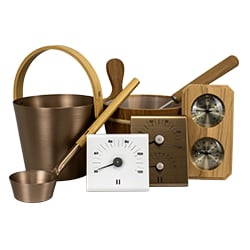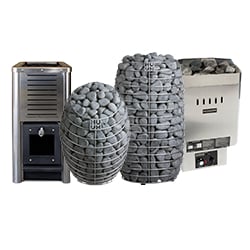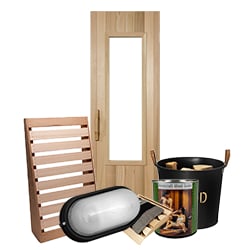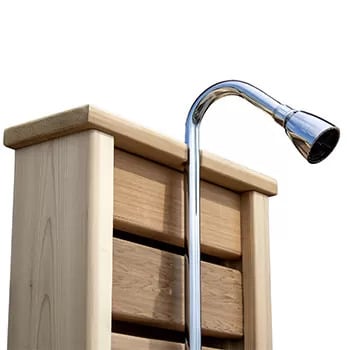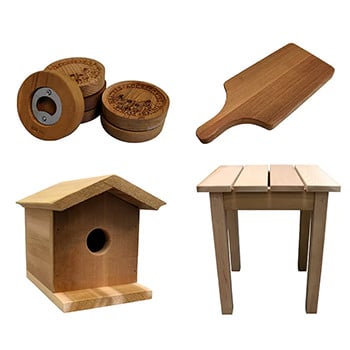Within reason, try to keep your room smaller rather than larger. The upper and lower benches are the main components you will use to sit and lay down in the sauna. After allowing for the depth of each bench, (typically 19" each) you should then plan on space for your heater, plus an area of 4" around the front, and two sides.
A smaller room will also permit using a smaller heater, smaller circuit breakers in your panel, and provide more efficient heating.
TIP: remember that most sauna users like to stretch out on the upper and lower benches, so try to have the main bench wall 6 feet or longer.
Example: let's plan a room 6 ft x 5 ft. The 6 foot wall will allow one upper and one lower bench, each 6 feet long, ideal for laying down. The 5 foot (60") side wall space will be used up by: a)19" wide upper bench, and b)19" wide lower bench, leaving 22" of space for the heater and safety clearance. ..."perfect" (60" - 19" - 19" = 22")
Note: the ceiling height for a sauna can be from 6 1/2 to a maximum 7 feet high. Because heat rises, you want the benefit of the warmer air in the sauna while you are laying on the upper bench, so a ceiling height of 8 or 9 feet is going to defeat this, plus your heater will not function properly.
Room size: once you have determined your room dimensions, measure the cubic area (length x width x height) and from the chart on our heater page choose: a) the model of heater, and b) the sauna control.
Tip: you can install two heaters if you need to service a very large room in your home (i.e. over 450 cubic feet).



